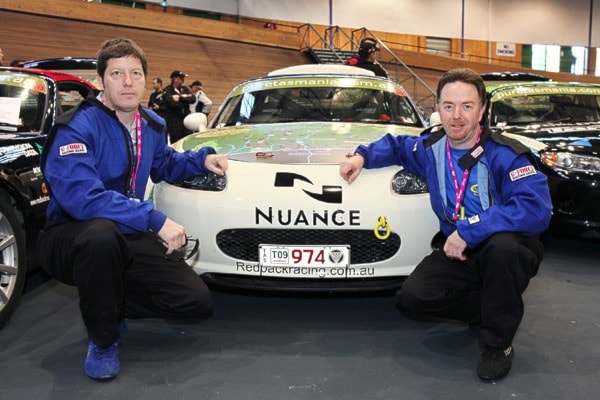A Nelson doctor leaves for Tasmania today to compete in his sixth Targa road race.
Kelly Silverthorn will be one of several hundred participants in the event, which begins next week in Launceston, in the Australian state’s north, and ends five days and 2,000 km later at Hobart in the south.
The race takes place on closed public highways and draws an estimated 200,000 spectators each year.
Silverthorn says it further boasts of bringing over $10 million into the Tasmanian economy and is the state’s biggest annual event for international attention, volunteerism, and economic development.
As in all his previous races, he will not see the car he’s driving until he arrives.
“I’ve done what’s called arrive and drive,” he said in an interview. “Little industries crop up around each of these events. You can fly in, rent a race car and a team that knows the car. I’ve been in Porsches, Hondas, BMWs, and Miattas.”
He will be in a Miatta this time, and joined by co-driver Duane Bentley, the CEO of Targa Canada West. The pair raced a Porsche in New Zealand last October.
“In New Zealand I was basically bankrolling it, so I got to drive,” Silverthorn says. “The co-driver usually pays nothing or a lot less. But in Tasmania we’re splitting the cost and so we’re swapping seats back and forth.”
Silverthorn says typically, six to eight stretches of road are closed to other traffic in a day to make them safe for racers, who leave at 30-second intervals, battling the clock.
There are 40 stages, ranging from one to 50 km. Drivers are given detailed instructions on where to turn. Although there is no speed limit, the average speed over a stage must be less than 130 km/h.
In the Tasmanian event, competitors are also allowed to drive the course ahead of time at legal speeds and make notes, identifying where they should go faster or slower. (Silverthorn’s team will do that for him.)
Simply finishing is considered an accomplishment and earns a trophy or plate.
“Five days of racing is quite a bit and there are a lot that don’t complete,” Silverthorn says. “I’ve managed to get a plate all five times.”
He was drawn to Targa simply by seeing it on TV, and decided to attend an event in Newfoundland as a spectator. But after being put in touch with an arrive and drive outfit, “I talked my wife into going with me, and had such a great time that I’ve kept doing them.”
Silverthorn started Targa Canada West with the goal of bringing road races to this part of the country, “but I realized it was going to take more time than I could devote to it, so one of the people helping out bought the company.”
That was Duane Bentley, his co-driver in Tasmania, who is “pushing forward, making further progress.”
Although the idea received a cool response in Nelson when it was pitched, Nakusp has since embraced it (see related story, page 30).
